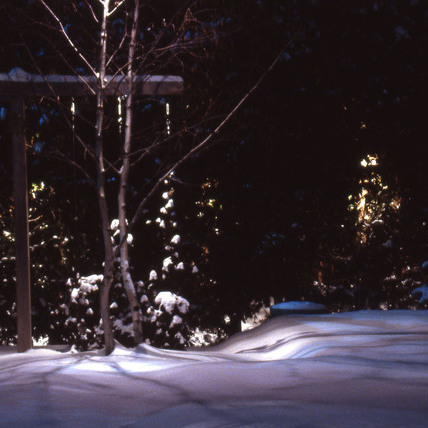3 Common Issues With LED Landscape Lighting
You probably know by now that I love LED landscape lighting, and as more and more of our customers decide to add it to their property, they love, it, too. I’ve dedicated entire articles to the benefits of LED landscape ligthing: It’s beautiful, low maintenance and costs less to maintain than incandescent and halogen bulbs.
But no landscape lighting solution is perfect, and if you want to know the problems with outdoor LED lights, I’ll tell you. Don’t bother to put your feet up — this won’t take long!
Past Issues With LED Landscape Lighting
There used to be a lot of problems with LED lights. Color retention was a big one. A bulb might change from its nice warm glow to a colder, bluer light.
Matching lights was tricky, too. You could line up 10 LED bulbs and each might have a slightly different color. The reason for this is a term called “binning.”
LED chips are produced in batches and are kept organized in separate “bins,” or storage locations, for each production run. If the LEDs you get are supplied from the same bin, they’ll have the same color characteristic. But it’s been a challenge to exactly reproduce the color from one batch of lights to the next.
Luckily, manufacturers have gotten a better handle on these issues with LED landscape lighting.
So what problems remain with outdoor LED lighting?
Outdoor LED Lights Aren’t Great At Melting Snow

Not that you were expecting your LED lights to also be your snow removal system (If I could make that happen, I’d be famous!) but if you’re used to halogen bulbs, you know snow doesn’t pile up on them and block the light. Those bulbs emit heat, so they handily melt any snow that piles on top of them.
Not so with LED bulbs. They’re cool customers, and don’t produce as much heat as halogen or incandescent bulbs do. This time of year, when snow can cover up lights, that can be an issue. After a heavy snowstorm, snow can block your LED lighting.
The solution: Grab a broom and sweep the snow off your fixtures. Sure, it’s a bit of an inconvenience, but since we only have a couple big snowstorms a year here in Utah, it’s a small price to pay for all the benefits of LED.
LED Outdoor Lighting Is Moisture Sensitive
LEDs are more sensitive to water and moisture than halogen bulbs. Just like moisture affects your cell phone or laptop, when it seeps into the housing of an LED light, it can quickly short it out.
So it’s really important to use high quality fixtures to keep moisture away from the bulbs. (You can trust Landscape Lighting Pro of Utah to choose the highest-quality fixtures!)
LED Landscape Lighting Costs More Up Front
If you’re a regular here, you’ve heard me explain this before. Yes, LED lighting is more expensive up front. But it’s a temporary problem.
While we recommend replacing halogen bulbs once a year, we replace LEDs only when they fail (which is hardly ever). Many of today’s LED bulbs are rated to last 50,000 hours and come backed with warranties of up to five years or more.
Eventually, the LED bulbs will pay off, and in the meantime, you’ll enjoy less heat production, longer bulb life, and the same warm, beautiful glow you enjoyed with incandescent lighting.
If you still have questions about the pros and cons of LED landscape lighting, we’d love to hear from you. Give Landscape Lighting Pro of Utah a chance to address any of your concerns.
Located in Sandy, Utah, we serve customers throughout Utah’s residential areas, including Salt Lake City, Park City, Draper and Holladay. Landscape Lighting Pro of Utah’s outdoor lighting portfolio includes projects from Salt Lake County and Utah County, to Davis County and Summit County — and beyond.Call (801) 440-7647 to schedule your free landscape lighting consultation, or fill out our simple contact form.
Salt Lake City (Midvale)
801-440-7647
St. George
435-932-6627
©2025 Landscape Lighting Pro
Privacy Policy
Cookie Policy